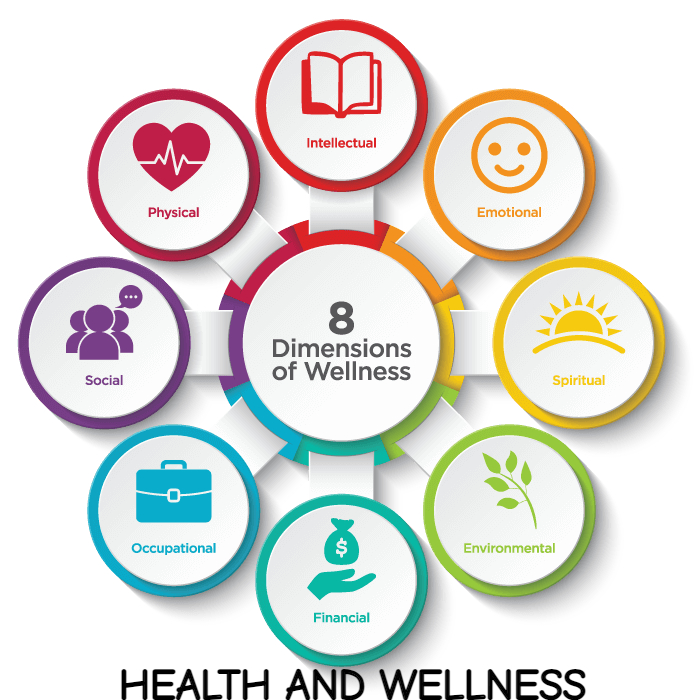
Exploring the Depths of Health and Wellness: A Holistic Perspective
In today’s dynamic world, the terms “health” and “wellness” have transcended mere physical well-being to encompass a comprehensive approach to living a fulfilling life. This article delves deep into the intertwined realms of health and wellness, unravels their multifaceted nature, and provides practical insights into achieving holistic balance in every aspect of life.
Understanding Health and Wellness
Health is not just the absence of disease; it encompasses a state of complete physical, mental, and social well-being. This definition, as articulated by the World Health Organization (WHO), emphasizes that health is a resource for everyday life, enabling individuals to thrive in their personal and professional pursuits. Wellness, on the other hand, extends beyond health to encompass proactive measures aimed at achieving optimal well-being across various dimensions.
Key Components of Health

- Physical Health: The foundation of overall well-being, physical health involves maintaining a healthy body through regular exercise, balanced nutrition, sufficient sleep, and preventive healthcare practices. Emphasizing trends such as “home fitness routines,” “healthy diet plans,” and “exercise for mental health,” this dimension ensures the body functions optimally to support daily activities and long-term vitality.
- Mental Health: Central to our cognitive and emotional functioning, mental health encompasses emotional resilience, stress management, and psychological well-being. Keywords such as “mental wellness strategies,” “stress relief techniques,” and “mindfulness practices” underscore the importance of nurturing a healthy mind to cope with life’s challenges and foster positive mental states.
- Emotional Well-being: Emotional health involves understanding and managing emotions effectively, fostering healthy relationships, and cultivating a sense of inner peace. Topics like “emotional resilience,” “self-care practices,” and “positive psychology” highlight strategies for enhancing emotional well-being and building meaningful connections with others.
- Social Connections: Social health emphasizes the significance of interpersonal relationships, community engagement, and social support networks. Keywords such as “social wellness,” “community involvement,” and “supportive friendships” underscore the role of strong social connections in promoting happiness, reducing stress, and enhancing overall quality of life.
- Spiritual Balance: Spiritual wellness encompasses finding meaning and purpose in life, exploring personal beliefs, and connecting with a sense of inner peace and harmony. “Spiritual growth,” “mind-body connection,” and “meditative practices” are trending topics that reflect a growing interest in nurturing spiritual well-being as a fundamental aspect of holistic health.
Dimensions of Wellness

- Intellectual Growth: Intellectual wellness focuses on lifelong learning, critical thinking skills, and intellectual curiosity. “Personal development,” “intellectual engagement,” and “creative thinking” are trending keywords that highlight the importance of expanding knowledge and stimulating intellectual growth to support overall well-being.
- Occupational Fulfillment: Occupational wellness relates to finding satisfaction and purpose in one’s work or career path. “Work-life balance,” “career satisfaction,” and “professional growth” are pertinent topics that emphasize the significance of pursuing a meaningful career while maintaining a healthy balance between work and personal life.
- Environmental Awareness: Environmental wellness emphasizes sustainable practices, eco-conscious living, and advocating for environmental protection. Keywords such as “green living,” “environmental responsibility,” and “sustainable lifestyle” underscore the role of environmental stewardship in promoting personal health and global sustainability.
Achieving Balance: Practical Steps
Achieving health and wellness requires a proactive approach that addresses each dimension of well-being. Here are practical steps to enhance your overall wellness:
- Physical Activity: Incorporate regular exercise into your routine, such as “home workouts” or “outdoor fitness activities,” to improve physical health and boost energy levels.
- Nutritious Diet: Focus on “healthy eating habits,” “nutrient-dense foods,” and “meal planning” to support optimal physical and mental health.
- Stress Management: Practice “stress reduction techniques,” “mindfulness meditation,” and “deep breathing exercises” to alleviate stress and enhance emotional resilience.
- Quality Sleep: Prioritize “sleep hygiene,” “bedtime routines,” and “restorative sleep practices” to improve cognitive function and overall well-being.
- Social Engagement: Cultivate “supportive relationships,” “social connections,” and “community involvement” to foster a sense of belonging and enhance social well-being.
Conclusion
In conclusion, health and wellness are integral components of a fulfilling life, encompassing physical vitality, mental clarity, emotional resilience, social connections, and spiritual harmony. By integrating trending keywords and actionable insights, this article aims to empower readers to embrace a holistic approach to health and wellness. Embrace these principles to embark on a transformative journey towards optimal well-being and lasting happiness in all aspects of life.


